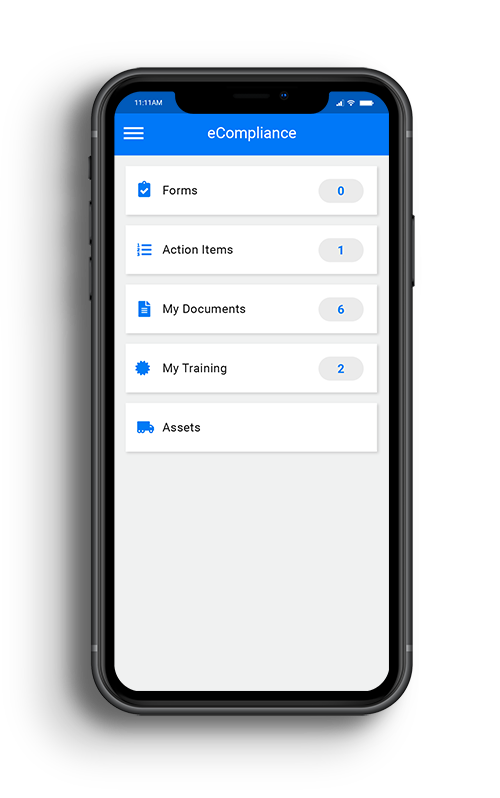
Share this Post
PUBLISHED
June 14, 2021
READ TIME
4 Minutes
WRITTEN BY
![]() Dina Adlouni
Dina Adlouni
Dina is the resident Content Writer at EcoOnline North America . When she’s not writing about health and safety, you’ll find her enjoying a cup of tea while watching her favorite sitcom.
The Occupational Safety and Health Administration (OSHA) has issued a new emergency temporary standard (ETS) focused on keeping healthcare workers working in hospitals, nursing homes, and the like, safe from contracting COVID-19. Updated guidance has also been released, directed towards employers in other industries where close contact may be seen such as manufacturing, meat processing, retail, and more, to help protect unvaccinated employees.
Once published with the Federal Register, this new ETS will be effective immediately, giving employers 14 days to comply with certain requirements and 30 days for others. This will help ensure employers are doing all they can to keep front-line workers and healthcare professionals safe.
What’s New?
OSHA’s new announcement means certain organizations will have to put new measures in place and fulfill specific requirements to create a safer working environment including:
1. Hazard Assessment and a Written Approach: The new ETS will require employers to conduct a thorough hazard assessment of their site and locations, and come up with a COVID-19 plan to mitigate risks related to the coronavirus and its variants.
2. Personal Protective Equipment (PPE): PPE such as N95 respirators, masks, etc. must be provided by employers to help protect workers on-site.
3. Social Distancing Measures: The recommended distance of 6 feet must still stay in effect indoors to help reduce any exposure to the virus. If this is not possible, barriers must be erected.
4. Awareness: COVID-19 focused training must be given to all workers to educate them on methods of transmission and what can be done to curb the spread, such as washing hands regularly, wiping down workstations, etc.
5. Time Off: Employees must be given time off to get vaccinated and recuperate if side effects arise. Paid time off of up to $1400 a week should be given to covered workers who are infected or contagious. Workers should not come to work if they are feeling unwell.
When published with the Federal Register, this new emergency temporary standard will be effective immediately. Employers have 14 days to comply with certain requirements and a full 30 days for others. For a more in-depth look at OSHA’s new emergency temporary standard, click here and here for the updated guidance for non-healthcare industries.
The Impact
These changes will have a great impact on organizations to ensure all changes are made to help protect their people. Mitigating the risk of exposure and putting measures in place to protect both vaccinated and unvaccinated workers is the priority for all employers.
For some, this might be a quick process, but for other organizations who are more reactive and have safety programs which are inflexible, this may be a bit of a challenge. With disconnected team members and departments, little visibility into safety initiatives and processes, as well as a lack of employee and management accountability, complying with these new requirements could be difficult and result in additional time lost.
Your Solution
To stay on top of new regulatory mandates or guidelines, organizations must be resilient and able to quickly respond at a moment’s notice. These are the elements that will help you develop a proactive environment and quickly make changes to your safety program, when necessary:
1. A cloud-based, configurable mobile solution which will help you move away from paper or spreadsheet-based systems, giving you a comprehensive view of all information, data, and processes at a glance.
2. Clear guidance for all team members and employees which includes protocols and processes which must be followed.
3. Online training to front-line workers and employees, to stay on top of any new changes and keep timely information top of mind.
4. Streamlined communication so senior leadership and all departments and employees are aligned on safety initiatives, processes, etc. to drive accountability and quickly mitigate risks.
5. Access to data and analytics in real-time to make better, more proactive, fact-based decisions.
6. Methods to track the roll out and adoption of changes in your safety program, ensuring compliance is always maintained as updates arise.
Modifications to your safety program and hazard assessment documentation and forms can be simplified with a digital tool. Environmental Health and Safety (EHS) professionals should be able to easily make changes with a few simple clicks and leverage automated workflows that send pertinent information out to all key stakeholders in near real-time. Action items should also be easily created and tracked to ensure all employees are aware and have completed their assigned tasks including those related to PPE, online training and awareness, and physical distancing measures.
With a cloud-based solution, organizations can work towards being resilient in the face of change, prepared for anything that may come their way. We want to help you create a safe work environment and protect your people. Contact our EcoOnline Safety Experts to proactively discuss your organizational requirements. From planning to building a solution that meets your needs, we can help you.
Speak to an EcoOnline Safety Expert Today
Unleash the Potential Within Your Safety Data Now

